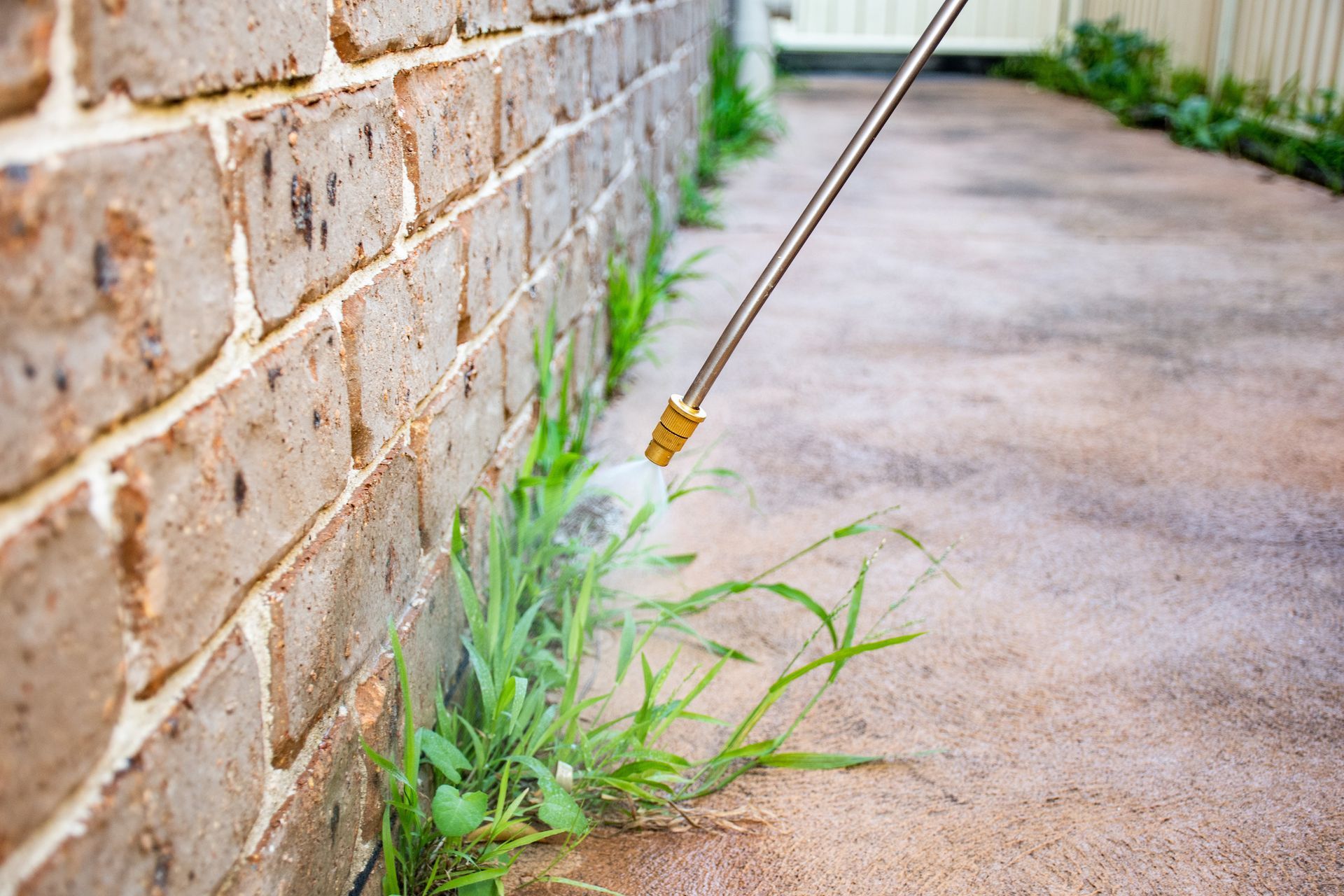Weed Control in Lawns & Landscaping Beds
Blades of Grass Landscaping
Weeds are a natural part of every lawn and garden, but without proper control, they compete with turf and ornamental plants for water, sunlight, and nutrients. Understanding how weeds develop and germinate is the first step toward effective management.
How Weeds Develop & Germinate
- Weeds reproduce through seeds, rhizomes (underground stems), stolons (above-ground runners), and root fragments.
- Annual weeds (like crabgrass) spread quickly by seed and complete their life cycle in a single season.
- Perennial weeds (like dandelions and thistle) return year after year from established root systems.
- Most weed seeds can remain dormant in the soil for years until conditions are right for germination.
- Moisture, warmth, and light trigger weed seed germination, often at the same time grass or garden plants begin to grow.
Why Weeds Are a Problem
- Weeds compete directly with turfgrass and ornamentals for water, nutrients, and sunlight.
- They can crowd out desirable plants, creating thin and patchy lawns or overgrown garden beds.
- Certain weeds harbor insects and diseases that can spread to healthy plants.
- Left unchecked, weeds produce thousands of seeds, making control more difficult in future seasons.
Weed Control in Lawns
- Maintain a mowing height of 3–4 inches to shade soil and discourage weed seed germination.
- Apply pre-emergent herbicides in early spring to prevent annual weeds like crabgrass from sprouting.
- Overseed bare spots to reduce open areas where weeds can take hold.
- Use selective post-emergent herbicides to target broadleaf weeds like dandelions and clover.
- Healthy, dense turf is the best defense against weeds.
Weed Control in Landscaping Beds
- Apply 2–3 inches of mulch to block sunlight and prevent weed seed germination.
- Use landscape fabric beneath mulch for added protection in high-maintenance areas.
- Hand-pull weeds while they are small to prevent them from establishing strong roots.
- Apply pre-emergent herbicides labeled for landscape beds to prevent weed seed germination.
- Inspect beds regularly and remove weeds before they flower and set seed.
Integrated Weed Management
- Combining cultural practices (mowing, mulching, overseeding) with chemical and mechanical control provides the best long-term results.
- Monitoring lawns and beds regularly allows for early detection and treatment before weeds spread.
- Prevention is more effective and less costly than removing established weeds.
Blades of Grass Landscaping uses proven methods to manage weeds in lawns and landscape beds. By combining proper mowing, fertilization, mulching, and selective treatments, we help keep your property looking clean, healthy, and attractive.





